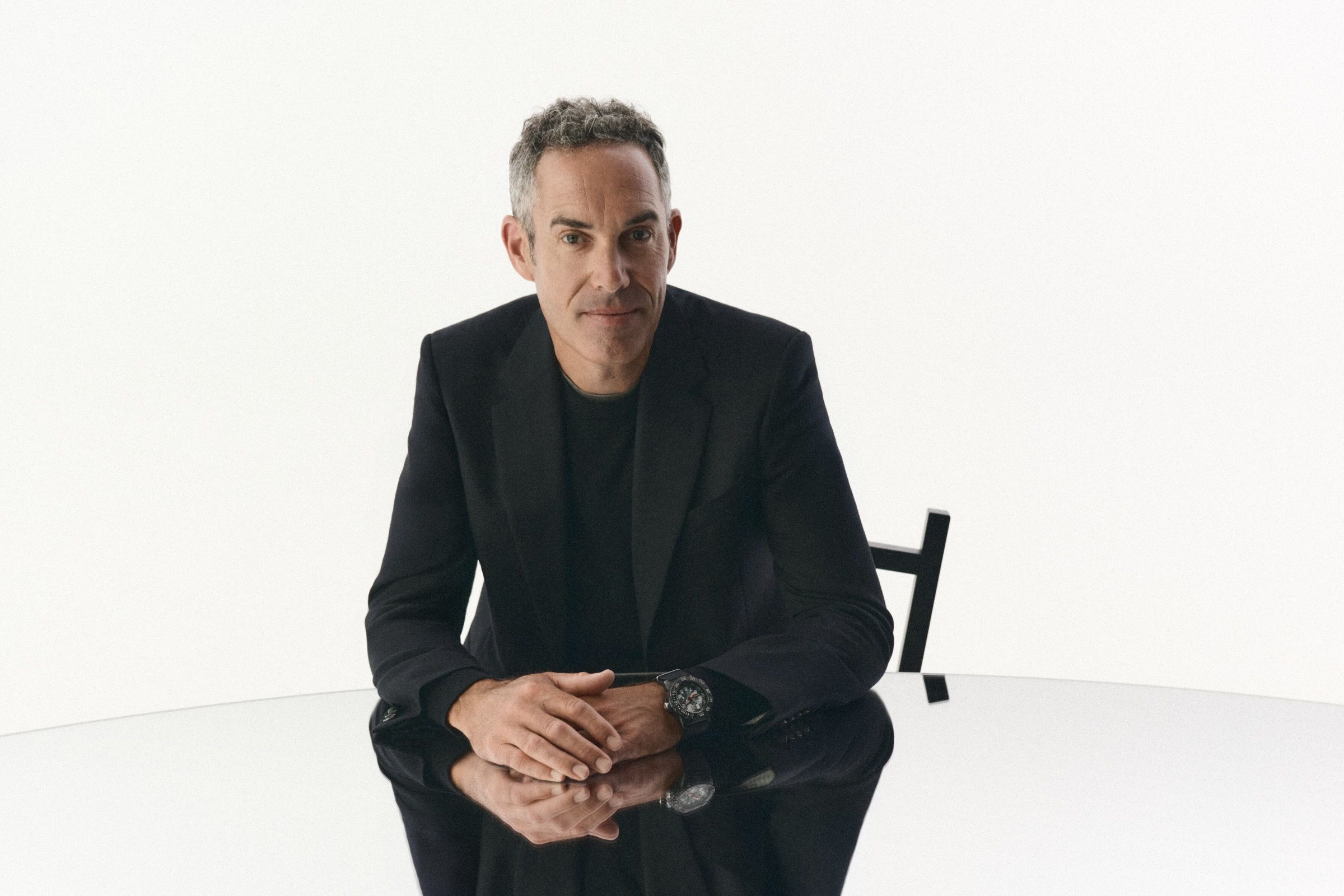Driven: How Chris Urmson and Aurora Are Building the Future of Self-Driving
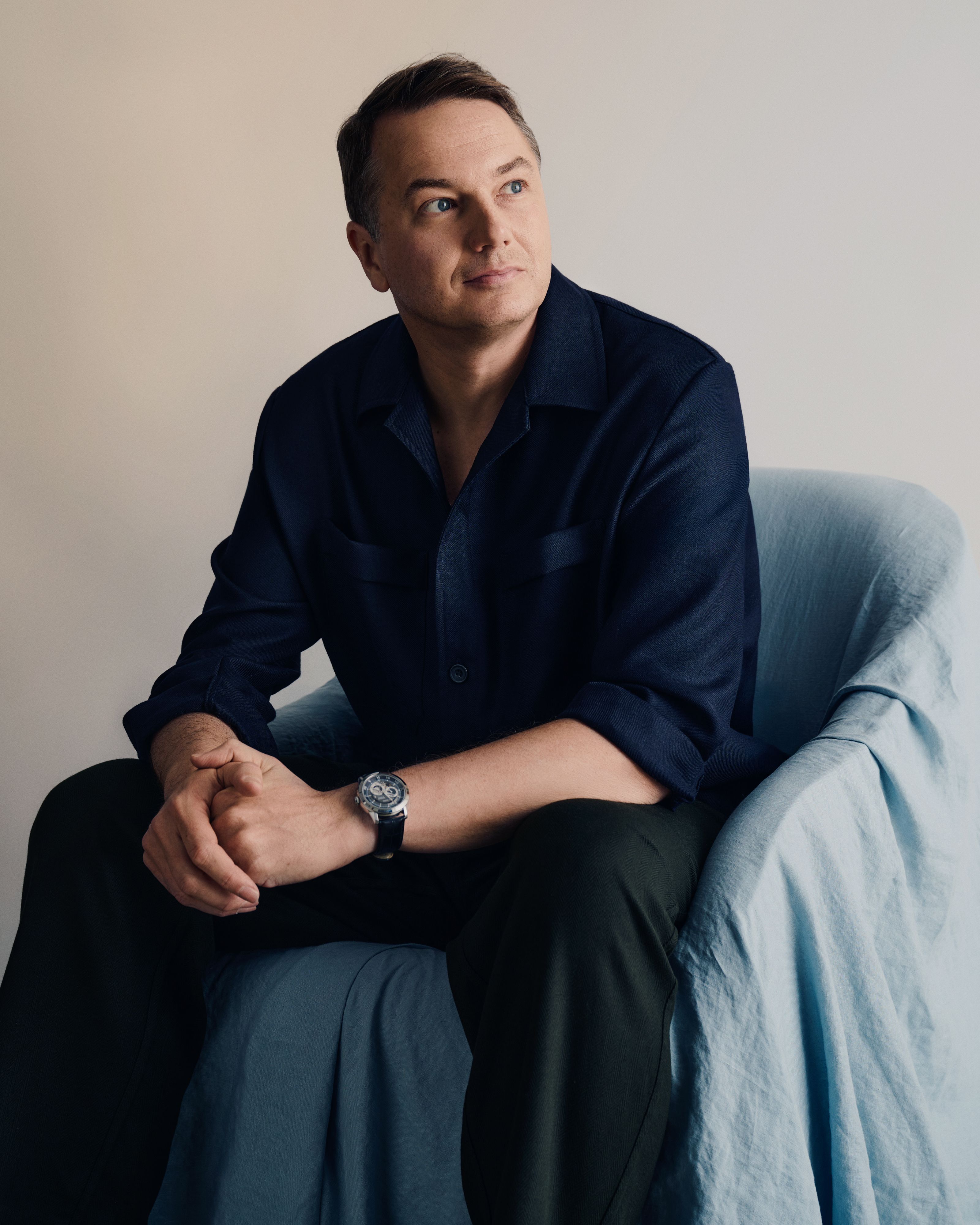
On the morning of March 13th, 2004, thousands of spectators packed the grandstands around the Slash X Ranch, a biker bar near Barstow, California, to watch a field of autonomous vehicles race 142 miles across the Mojave Desert.
The inaugural DARPA Grand Challenge, as it was known, had been organized by the U.S. Department of Defense to jumpstart innovation in self-driving technology, which was badly needed to protect soldiers during the ongoing Iraq War. More than 100 groups signed up to compete—defense contractors, automotive engineers, universities, hobbyists—with 15 qualifiers vying for the winner-take-all prize of $1 million.
One of the participants was a 27-year-old PhD student named Chris Urmson. For the past year, Urmson’s team at Carnegie Mellon University had been hard at work on Sandstorm, a 1986 Humvee they had outfitted with an array of sensors and computing gear: multiple LIDAR units, a radar system, stereo vision cameras, a ruggedized GPS stack. Just a few hours earlier, they had received the official course map and made their final preparations. Now, as helicopters circled overhead, Urmson could only watch as Sandstorm took its place alongside the other robots. “It was like sending your child off on the first day of school,” he recalls.
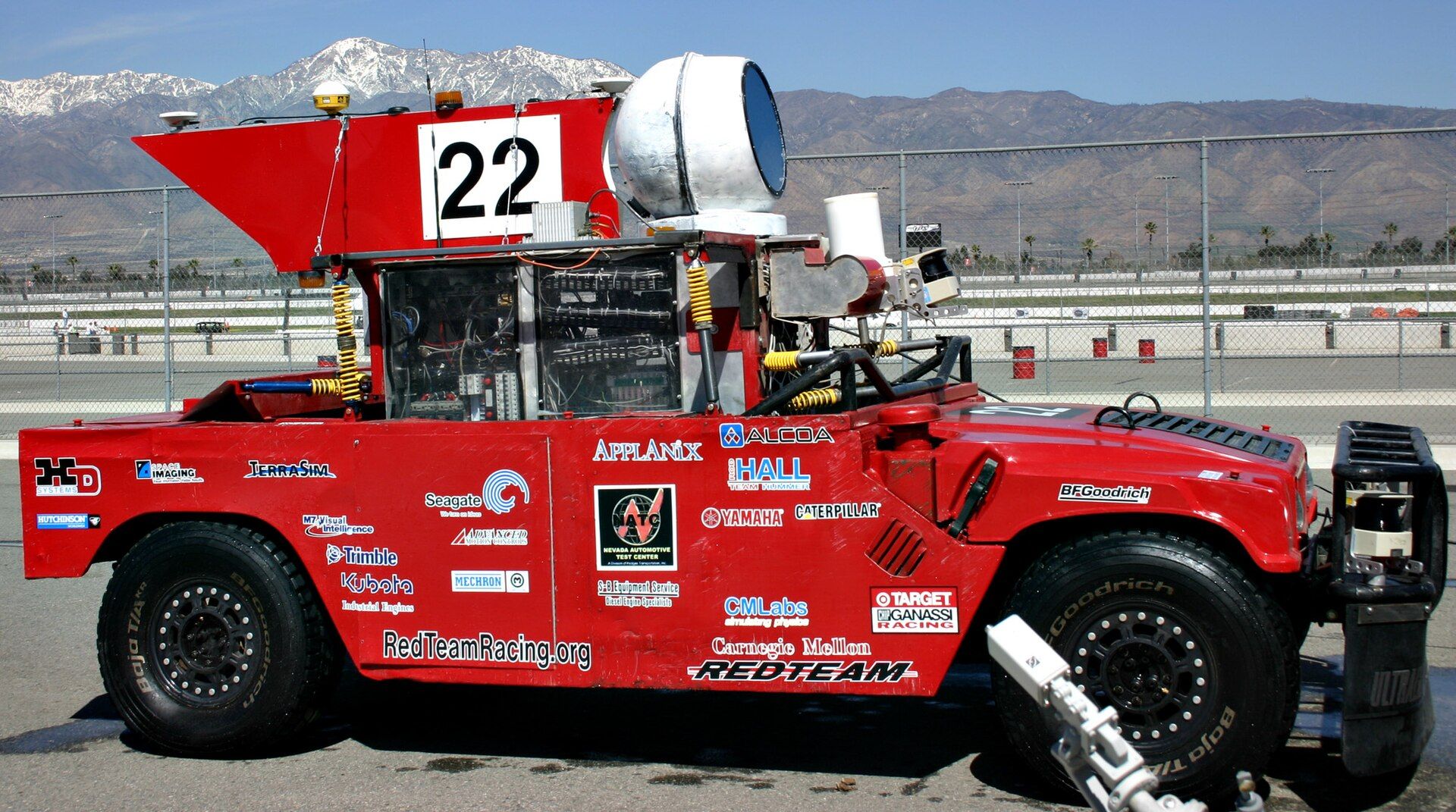
CMU’s autonomous vehicle Sandstorm at the inaugural 2004 DARPA Grand Challenge.
“The idea of having a robot drive at high speed across the desert just seemed like a neat, fun problem to solve... By the end of the third challenge, it was clear this technology could have a huge impact on America’s roadways.”
—Chris Urmson, Aurora
Sandstorm was the first vehicle out of the gates. It quickly hit speeds of 40 miles an hour, charging through the desert until the only part still visible through the sagebrush was the giant red fin on top. As the other robots crashed out of the race—some within a few feet of the starting line—Sandstorm powered across the salt flats, maintaining its lead. At the seven-mile mark, however, it faced a winding road up a steep hill known as Daggett Ridge. After smashing through a series of fence posts, the Humvee rounded a corner and got stuck on a berm. Unable to move, it pressed the gas even harder, tires scraping against gravel, dark smoke billowing in the air. Race officials ordered an emergency stop, triggering the vehicle’s brakes and snapping all four wheels’ half shafts at once. Eventually, the race was called. Sandstorm had made it farther than any other robot, but there was no winner, no $1 million prize.
More than 20 years later, Urmson still can’t hide his disappointment. “I mean, it sucked,” he says, masking a grimace with a tight smile. “It was an incredible day, and on one hand, we should have been proud. But on the other, we put in all this work, and we fell short.”
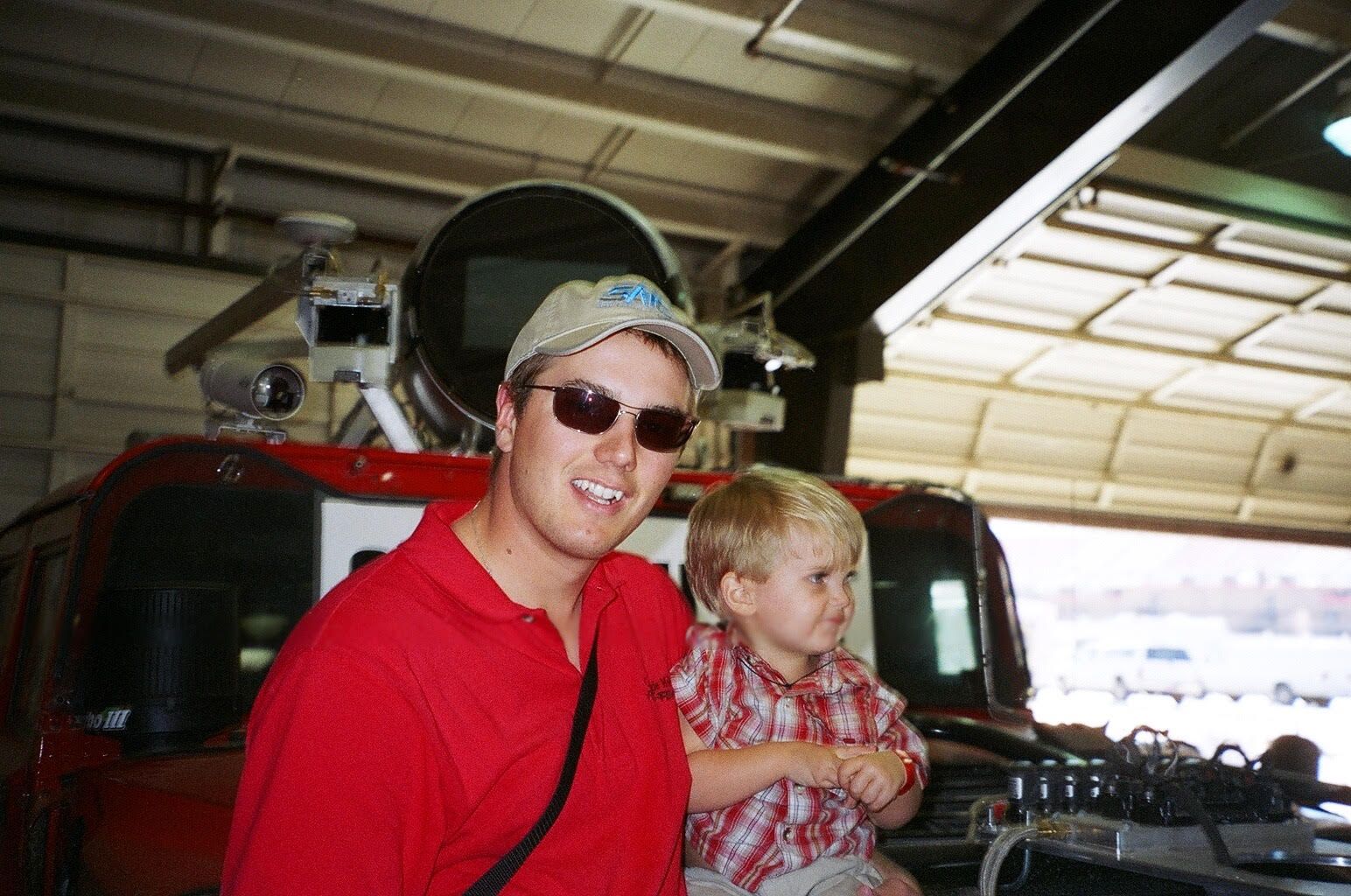
Urmson with one of his two sons at the 2005 DARPA Grand Challenge.
Urmson and the CMU team would go on to compete in two more DARPA challenges, finishing second in 2005 before winning it all in 2007. Soon, what began as a curiosity—“The idea of having a robot drive at high speed across the desert just seemed like a neat, fun problem to solve”—showed him a much bigger opportunity. “By the end of the third challenge,” he says, “it was clear this technology could have a huge impact on America’s roadways.” From 2009 to 2016, Urmson led Google’s Self-Driving Car Project, building the technology that would become Waymo, whose robotaxis have become ubiquitous in cities like San Francisco and Los Angeles, transporting hundreds of thousands of passengers each week.
“He’s one of the most competitive people I’ve ever met... It’s wrapped in this wonderful, soft Canadian niceness. But inside, there’s a fire burning—and once you get to know him, you can really feel it.”
—Mike Volpi, Index Ventures
Today, Urmson is co-founder and CEO of Aurora, developers of the Aurora Driver, an autonomous driving system. With his co-founders Drew Bagnell and Sterling Anderson, Urmson has built a company poised to not only define autonomous transportation—beginning with trucking—but make the world’s roads safer, smarter, and more accessible. For more than two decades, Urmson’s calm, clearheaded leadership has made him a grounding presence in an industry known for hype and volatility. Mike Volpi, who led Index Ventures’ Series A investment in Aurora in 2018, points to Urmson’s “resilience, breadth and depth of knowledge, and ability to quietly and thoughtfully convey his passion and vision” as some of his biggest strengths. But there’s a hidden quality, he says, that sets Urmson apart as an entrepreneur.
“He’s one of the most competitive people I’ve ever met,” Volpi says. “It’s wrapped in this wonderful, soft Canadian niceness. But inside, there’s a fire burning—and once you get to know him, you can really feel it.”
A Mind for the Unknown
In the summer of 1999, Drew Bagnell was an incoming grad student at Carnegie Mellon’s Robotics Institute. On a sunny day in August, he joined the department’s annual whitewater rafting trip on the Youghiogheny River, about an hour outside Pittsburgh. Between stretches of tricky rapids, the water would calm, giving students a chance to take in the scenery. As Bagnell baked in the sun, another student—tall, soft-spoken, with kind eyes—paddled up beside him. The stranger climbed aboard Bagnell’s raft and promptly threw their captain overboard. “That was my first experience of Chris becoming captain of my ship,” Bagnell says.
Bagnell and Urmson became fast friends, hanging out together and playing Ultimate Frisbee on the campus quad. They worked in separate areas, and it would be many years before they talked about starting a company together, but Bagnell saw Urmson as a natural leader—“a high-integrity person who treated people well and always did things the right way.” He also kept an eye on Urmson’s early research, which focused on navigation systems for autonomous robots in extreme environments. Under the guidance of Red Whittaker, Urmson worked on a NASA-funded robot called Skyworker, designed to crawl along the trusses of space stations and carry out inspections and repairs. “It was really cool stuff,” Bagnell says.
From his earliest memories—staying up past his bedtime to watch the launch of the Space Shuttle Columbia—Urmson had always been fascinated by science and space. As a kid, he competed in Odyssey of the Mind, a creative problem-solving program that combined engineering challenges with improvisation and theatrical performance. He spent countless hours building with Lego, devouring Robotech novels, and imagining life in the Star Wars universe. “I think ‘nerdy’ is probably the best description,” he says of his younger self.
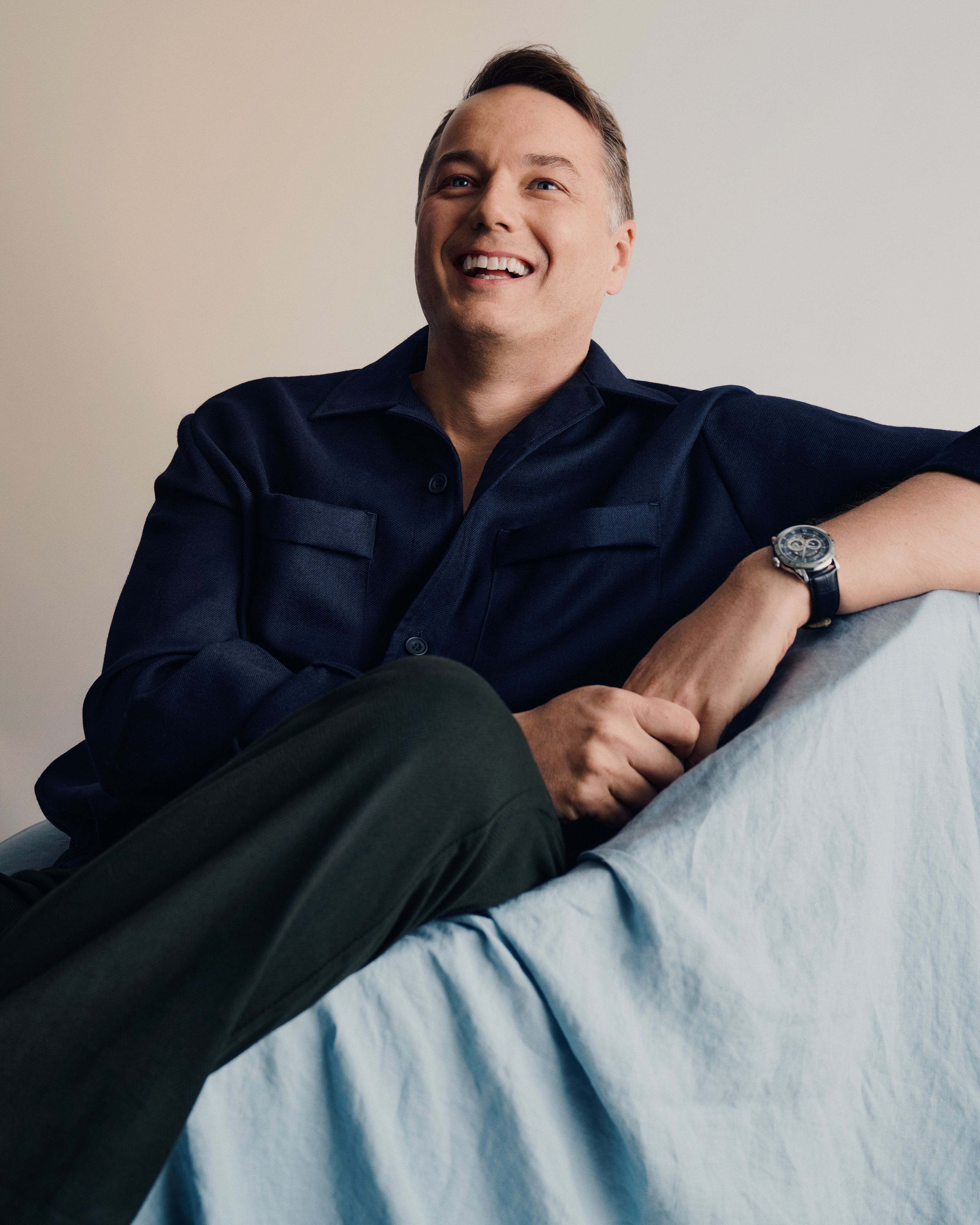
Born in Vancouver in 1976, Urmson moved with his parents to their native England when he was two, only to return to Canada a few years later. The oldest of three boys—his middle brother is an orthopedic surgeon, his youngest an RCMP officer—Urmson’s childhood followed his father’s career in the Canadian prison system, first as a vocational teacher and shop manager, then as a warden, and eventually as assistant deputy commissioner. It was an endless journey that took them through towns in Alberta, the Yukon, British Columbia, Ontario, Manitoba. Although they never stayed anywhere for more than five years, Urmson’s parents encouraged their sons’ interests and always stressed the value of education. “Wherever we moved, we lived in the cheapest home in the neighbourhood with the best schools,” Urmson says.
In 1994, during his last year of high school, Urmson met a girl named Jennifer. She told him she was planning to attend the University of Manitoba. Urmson had been accepted by several Canadian universities and initially chose to study at the University of Toronto. But that July, while at a summer camp in Israel, he had a last-minute change of heart. “I decided, ‘You know what? I like that girl. I’d like to go to the University of Manitoba,” he says.
“Chris had this remarkable combination of a strong theoretical foundation and a willingness to get his hands dirty and do whatever was needed to make things work."
—Reid Simmons, Carnegie-Mellon University's Robotics Institute
A few years later, Urmson was wrapping up his computer engineering degree, working in telecommunications research, and trying to decide what to do next. One day, he stumbled upon a poster for Carnegie Mellon’s Robotics Institute. It showed a six-legged robot crawling out of the mouth of an active volcano. “That looks awesome,” Urmson remembers thinking. He mentioned it to Jennifer, who encouraged him to apply. To his surprise, he got in.
When Urmson arrived on CMU’s Pittsburgh campus in 1998, he was struck by the diversity of his cohort. “It felt like they were intentionally trying to have an unusual class,” he says. There were students of all ages and cultural backgrounds, with degrees ranging from international relations to liberal arts. “It was an amazing, interesting group of people, and it turned out to be an awesome environment for me particularly, because while the university is rigorous and academically strong, it also values building practical systems,” he says.
Reid Simmons, one of Urmson’s two PhD advisors at CMU, remembers him as a rare kind of student—intensely bright, full of joyful energy, and unusually well-rounded. He stood out not just for his intelligence, but for his creativity, leadership, and ability to bridge theory and application. “Chris had this remarkable combination of a strong theoretical foundation and a willingness to get his hands dirty and do whatever was needed to make things work,” Simmons says.
In 2003, Urmson was in Chile, testing a solar-powered rover called Hyperion in the Atacama Desert—one of the driest places on Earth and a frequent stand-in for Mars—when his other PhD advisor, Red Whittaker, flew down to see him. Before leaving Pittsburgh, Urmson had floated the idea of entering the newly announced DARPA Grand Challenge. Whittaker had shut it down immediately. But in the weeks that followed, the professor changed his mind. “I think we should do it,” Whittaker said to Urmson. “Are you in?”
“Most PhD students would have just finished their thesis and moved on, but Chris was passionate about doing it. He was willing to take that detour and put in the tremendous amount of time it required to do it well.”
—Reid Simmons, Carnegie-Mellon University's Robotics Institute
That conversation shifted the focus of Urmson’s research and changed the trajectory of his life. After years spent developing autonomy for slow, deliberate space exploration—Hyperion moved about as fast as a 90-year-old pushing a walker—he was about to help lead a team into the chaos of high-speed, off-road driving. Simmons, watching from the sidelines, admired Urmson’s willingness to go out on a limb. “Most PhD students would have just finished their thesis and moved on,” he says. “But Chris was passionate about doing it. He was willing to take that detour and put in the tremendous amount of time it required to do it well.”
In the end, it paid off. Through the DARPA challenges, Urmson began piecing together the core elements of what it would take to make autonomous vehicles a reality—the hardware, the software, and most importantly, the relationships and community.
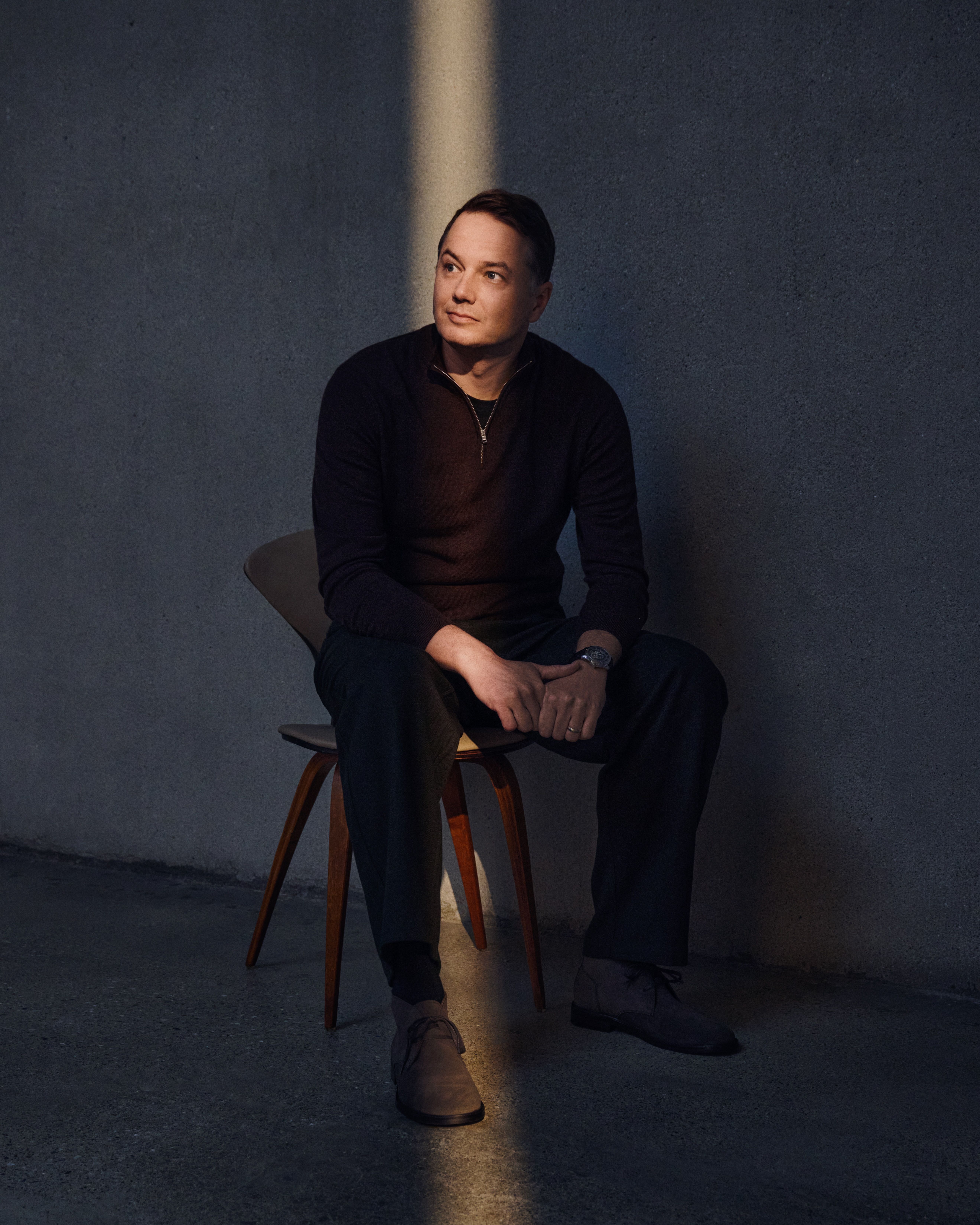
The Road Through Google
As a teenager, Urmson briefly toyed with the idea of studying medicine. “Then I realized I didn’t want to be dealing with blood all day,” he says. After deciding on engineering, a vision of his life began to take shape: get his bachelor’s degree at a Canadian university, do a PhD at a big-name school in the U.S., and find a job somewhere as a professor. After finishing the DARPA Challenges, he spent a couple years at Carnegie Mellon working with Caterpillar, automating “dump trucks the size of your house,” but his focus never changed. In late 2008, the plan clicked into place when he was offered a faculty position at Carnegie Mellon. He and Jennifer bought a house in Pittsburgh, picked out bedroom sets for their two young sons, and began to put down roots.
“I got up and said, ‘This is who I am, this is what I’m doing—oh, and by the way, I’m going to Google for the next little while, and I can’t tell you what I’m working on.'"
—Chris Urmson, Aurora
Then a few weeks later, Urmson got a call from an old rival, Sebastian Thrun. It was Thrun’s team at Stanford who won the 2005 DARPA challenge. Urmson’s team returned the favor in 2007, winning the Urban Challenge while Stanford finished second. At Google, Thrun had co-developed Street View, and now he was being tapped by Larry Page and Sergey Brin to pilot a secret self-driving car project. He asked Urmson if he wanted to lead it with him.
“In hindsight, it should have been easy, but that was one of the hardest decisions of my life,” Urmson says. He and Jennifer considered the downsides—giving up his grants at the university, saying goodbye to their friends and support network—and ultimately decided it was a risk worth taking. His next lecture at CMU happened to be new faculty introductions. “I got up and said, ‘This is who I am, this is what I’m doing—oh, and by the way, I’m going to Google for the next little while, and I can’t tell you what I’m working on,’” he recalls.
Urmson was 32 when he arrived in Mountain View. By then, he was convinced autonomous vehicles could be a transformative technology. That hadn’t been obvious when they were racing robots through the desert. But the 2007 Urban Challenge—held on a decommissioned Air Force base and designed to test real-world traffic scenarios and road rules—showed him how autonomy could not only make warzones safer for troops, but save some of the 40,000 American lives lost in traffic accidents each year.
At Google, Page and Brin gave Urmson’s team two missions to test the viability of autonomous vehicles and assess whether it warranted further investment. The first was to drive 100,000 miles on public roads. The second was to drive 1,000 miles of specially chosen, particularly challenging roads—like those around Tiburon, a peninsula north of San Francisco where opposing traffic shares a single lane; or Pagemill Road, a narrow, winding road popular with cyclists that climbs from Palo Alto into the Santa Cruz Mountains. The project was slated to run for two years. They completed both challenges within 18 months.
Urmson officially left Carnegie Mellon in 2011, staying on at Google to lead what would eventually become Waymo. Over the years, he helped grow the project from a scrappy internal experiment into one of the world’s flagship AV initiatives. Their technical progress was staggering: from LIDAR-topped test cars crawling along office park roads to a fleet logging millions of miles on highways and city streets. In 2015, Urmson gave a TED Talk in Vancouver, arguing that self-driving cars weren’t just a cool engineering problem; they could give mobility to the blind, safety to distracted drivers, and freedom to elderly parents no longer able to drive. As of May 2025, his presentation has been viewed nearly 3 million times.
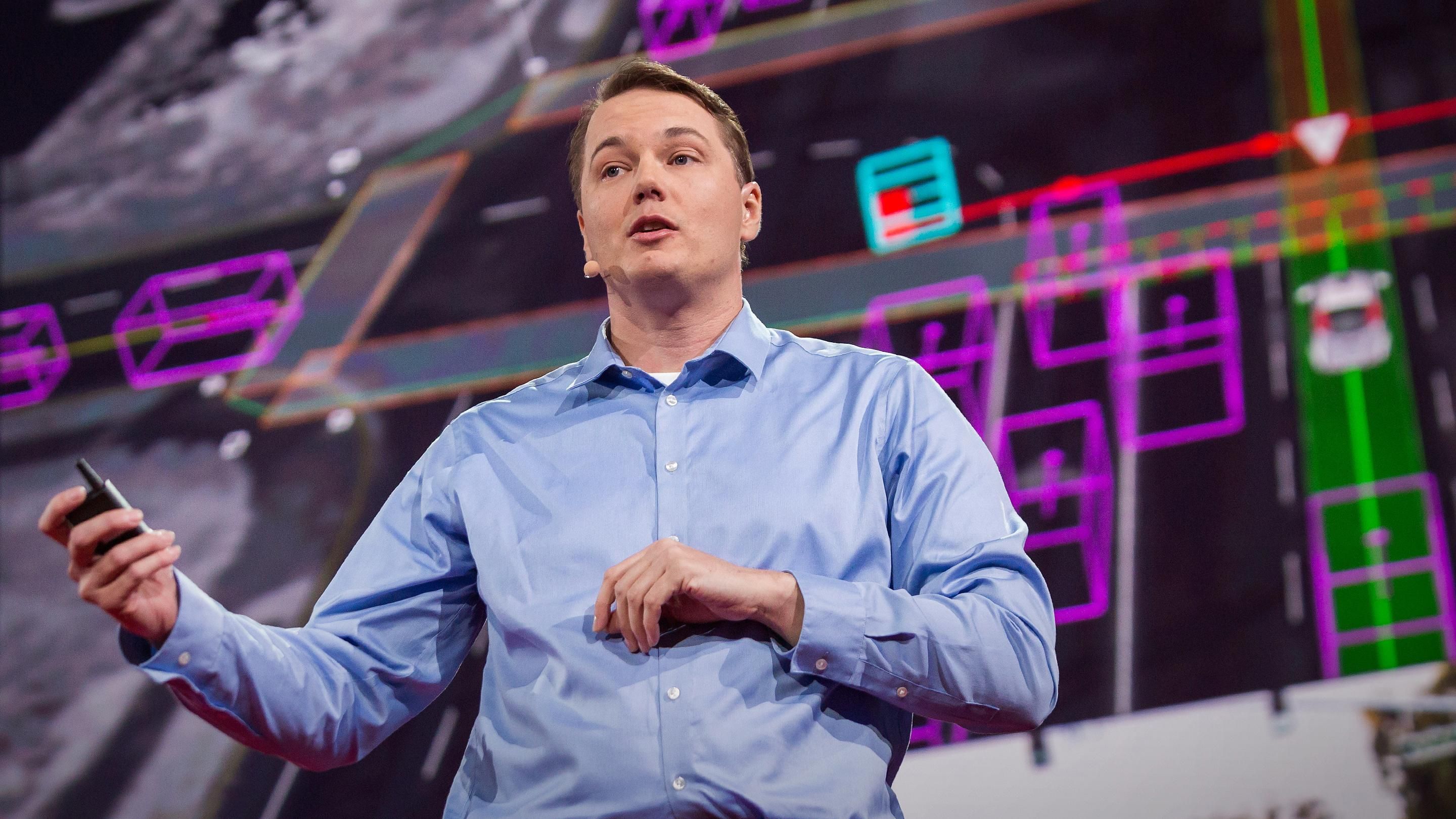
Urmson on stage at TED in Vancouver in 2015.
For Urmson, the work was equal parts exhilarating, humbling, and empowering. As a professor, he had to scrimp and save just to buy a student a graphics card. “Within my first month at Google, we were running compute jobs on 10,000 machines,” he says. He especially admired how the company’s lawyers worked to enable, not block, progress. “In universities, lawyers are there to protect the endowment; it’s a fight to do anything slightly off the beaten path,” he says. “At Google, the attitude was, ‘There’s some risk, here’s how to mitigate it, but ultimately you make the call.’ That alignment of purpose is really powerful.”
More than anything, he learned the value of culture and risk-taking. He joined Google in the midst of a global financial crisis, and while he worried at times that they might kill the project (“I thought I might have to go work in ad sales or something”), he never heard a sliver of doubt from his bosses. “Autonomous driving wouldn’t be where it is without the fact that Larry and Sergey were willing to take that bet,” he says. “I’ll always respect and appreciate that.”
By 2016, Urmson was leading a team of 800. The technology was working, but something else had started to shift. For all its focus on innovation, Google, he felt, wasn’t built for the long slog ahead. “It’s a web software company that’s used to changing direction on a dime,” he says. “But with AV, you’re operating on OEM time constants of five to seven years.” He tried to push for a clearer go-to-market path, a long-term roadmap that would take them from lab to road. But his confidence began to wane. “I’m a big believer that in business you have three options: you can fix it, you can get in line, or you can get out of the way,” he says.
Once again, it wasn’t an easy decision. “I will be eternally grateful to Larry and Sergey for the opportunity,” Urmson says. “I got to work with amazing people, found this really exciting space, and do it all at a scale I couldn’t have imagined.” At the same time, he knew that making autonomous driving a reality would require more than great engineering. It would require new kinds of partnerships, new business models, and a team built for the long haul. “I lost confidence that we were going to be able to make it happen inside Google,” he says. “And if I wasn’t the right person to lead it anymore, the right thing to do was step aside.”
Hard Challenges, Good People
In the fall of 2016, Urmson boarded a flight from San Francisco to Seoul. A prized free agent after leaving Google a few months earlier, he was scheduled to meet with Hyundai, one of several automotive companies eager to have him join their team.
“I didn’t want to tell my kids and grandkids, ‘I could have been that guy.’ I had to take my shot.”
—Chris Urmson, Aurora
Somewhere over the Pacific, he thought about what he wanted next: what he wanted to work on, who he wanted to work with, what he was uniquely capable of making happen, and how he could minimize regret. After a while, he pulled out his notebook and wrote: I want to do something hard with good people. He stared at those words, not entirely sure what they meant. The plane landed. The meeting with Hyundai went well. But over the days and weeks that followed, an idea began to take hold—along with the conviction that if he was going to bet on the future of self-driving, he wanted to do it on his own terms, with his own team.
“I was convinced self-driving cars and trucks were going to happen,” he says. “I didn’t want to tell my kids and grandkids, ‘I could have been that guy.’ I had to take my shot. There were only a few possible outcomes. Either it would be awesome, or we’d try and fail, or we’d try and I wouldn’t like it and I’d eject—but at least I could say I tried.”
The single-biggest reason I decided to go work with Chris was that I was craving integrity. He was going to do things the right way, and I knew I could trust him.Drew Bagnell,
Chief Scientist and Co-Founder at Aurora
When he got back to the Bay Area, he called his old college pal, Drew Bagnell. Since 2014, Bagnell had been working in Uber’s Advanced Technology division, helping to launch the world’s first self-driving robotaxi service. But inside Uber, he had seen the company’s culture of safety start to erode. “That was a big concern for me,” he says. After confiding to a mutual friend that he was ready for something different, word made its way back to Urmson, who reached out with an idea: what if they started something together? While Bagnell was mulling it over, he flew to California to meet with Uber’s leadership team and make a final plea for change. When that failed, he called Urmson back and said, “Let's talk more about this.”
For Bagnell, the decision ultimately came down to trust. “The single-biggest reason I decided to go work with Chris was that I was craving integrity,” Bagnell says. “He was going to do things the right way, and I knew I could trust him.”
Around the same time, Urmson reached out to Sterling Anderson. Anderson had been aware of Urmson’s work in grad school, but they didn’t really connect until a few years later, when Anderson was a researcher at MIT and Urmson invited him to give a talk at Google. They had stayed in touch as Anderson went on to lead Tesla’s Autopilot program. Over lunch, they started talking about putting together “something of a dream team,” as Anderson puts it—“an independent play that could enable an industry.”
“Chris was someone I respected,” Anderson adds. “When he connected me with Drew, we realized we had a unique opportunity to do something no one else was doing.”
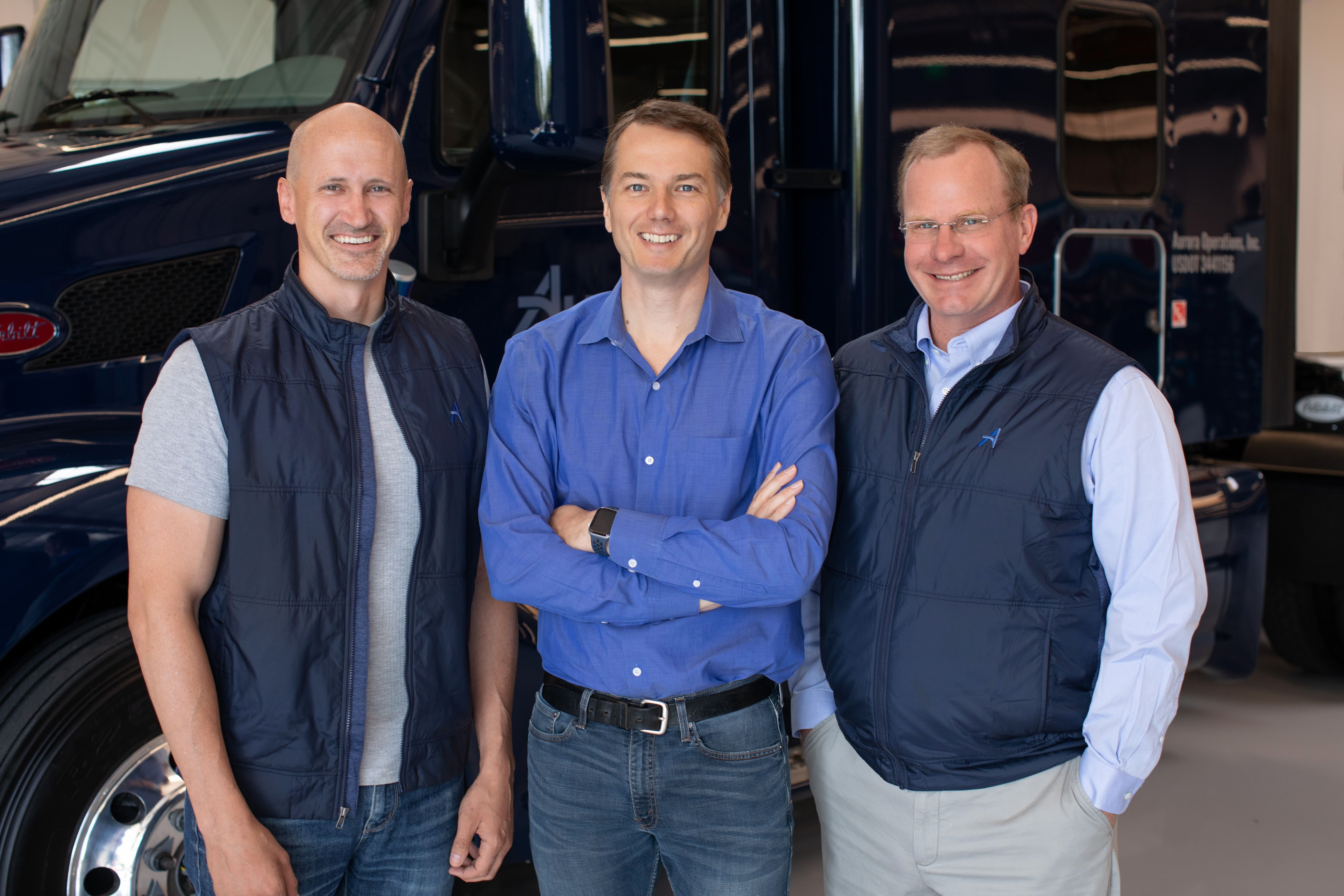
Left to right: Aurora co-founders Anderson, Urmson, and Bagnell.
Mike Volpi describes the three founders as “each unique and different, skill-wise, but very complementary. Chris provides the big picture, the drive, the strategy, the architectural vision. Drew is more of the nitty-gritty, master puzzle solver of any technical issue. Sterling is also technically deep but much more operational in nature.”
When they founded Aurora, Urmson says, they agreed on a few core principles: “We should focus on what we do best—building a product that could drive real impact. We should be independent, because that way we can focus on our mission rather than somebody else’s. And at the same time, we should work in collaboration with partners, not compete against them, because you move faster when you’re part of a pack.”
From the beginning, they set out to build a self-driving system—the Aurora Driver—that could power everything from freight to passenger transport. But in 2019, Anderson made the case that they should focus first on trucking. The market was massive—$800 billion in the U.S. alone—and the need was urgent, with a critical shortage of drivers, rising demand for faster delivery, and fatality rates 10 times higher than the average job.
“I fought it at first,” Urmson says. “I really care about moving people. But Sterling kept pushing, talking about the opportunity. He convinced me that if we could safely drive 80,000-pound trucks at highway speed, we could drive anything.” Urmson calls it a good example of how they make progress: plenty of disagreements along the way, but a shared vision when it really counts. “The good news is we agree on the things that matter most,” he says.
That shared vision includes the type of company they’re building at Aurora. “The thing we’re doing is so multi-dimensional, so complex,” Urmson says. “No one person has all the answers. None of us can hold all of it in our heads. We need people who respect each other, who feel empowered to drive things forward and do their best work as part of a team.”

Urmson and Anderson with their children at Aurora’s first office.
Since day one, that’s meant a strict “no jerks” policy. “There’s this idea in Silicon Valley that you should hire the 10x engineer even if they’re a prima donna,” Urmson says. “I don’t buy it. You can find the 9.5x engineer who’s not an asshole, and you’ll be stronger.”
Part of helping people do their best work, Urmson says, is making sure each team member feels included. “If nobody looks like you or has elements of your experience, or if we treat you differently, you’re not going to feel like this is your tribe,” he says. “So let’s be very intentional and do all the little things to make sure everyone at Aurora feels like they belong.”
Ultimately, Urmson and his co-founders recognize that what they’re doing is hard. Everyone needs to pull their weight. “If you look at professional sports teams, you don’t get to just hang around because people like you,” Urmson says. “We want to help people be successful. And we expect them to work hard to help us deliver on our mission. I think that’s fair.”
Swimming With the Whales
In February 2024, Aurora held its investor and analyst day in Pittsburgh. After the sessions wrapped, the group went to the company’s nearby test site. Known as “Almono”—a nod to the city’s three rivers, the Allegheny, Monongahela, and Ohio—the mini-city sits on a former steel mill site and features streets, traffic markers, and other obstacles designed to test Aurora’s AV technology before it hits public roads. Nearly eight years after founding the company with Bagnell and Anderson, Urmson stood with investors and strategic partners from companies like Volvo and Continental as two fully autonomous 18-wheelers made their way around the track. “It was like swimming with the whales,” he says.
"By enabling freight to move 24/7 without the limitations of human drivers, they’re changing the entire architecture of how goods move around the country."
—Mike Volpi, Index Ventures
The magnitude of Aurora's journey isn’t lost on Mike Volpi. He remembers first seeing Urmson on stage at the TED Conference in Vancouver. Back then, he was struck by the clarity of Urmson’s vision and the ambition of the problem he was trying to solve. But what’s impressed him even more over the years is how Urmson has kept the team focused and aligned, made hard strategic decisions for the long-term good of the company, and consistently raised the capital needed to pull it off, while spending far less than competitors.
“You’re talking about eight years of work before the product hit the market,” Volpi says. “In a what-have-you-done-for-me-lately world, keeping people believing for that long, conveying passion and excitement through all the ups and downs of AV, is extraordinary.”
Today, Aurora is entering a new chapter, shifting from a major R&D project to a true commercial enterprise. In April 2025, it officially launched its self-driving trucking service in Texas, becoming the first company to commercially operate autonomous heavy-duty trucks on public roads. Looking ahead, Volpi believes the company could transform the logistics industry—now worth $1 trillion in the U.S. and $4 trillion worldwide—much like Southwest Airlines reinvented air travel, replacing traditional hub-and-spoke models with a simpler, faster, more efficient network. “By enabling freight to move 24/7 without the limitations of human drivers, they’re changing the entire architecture of how goods move around the country,” he says.
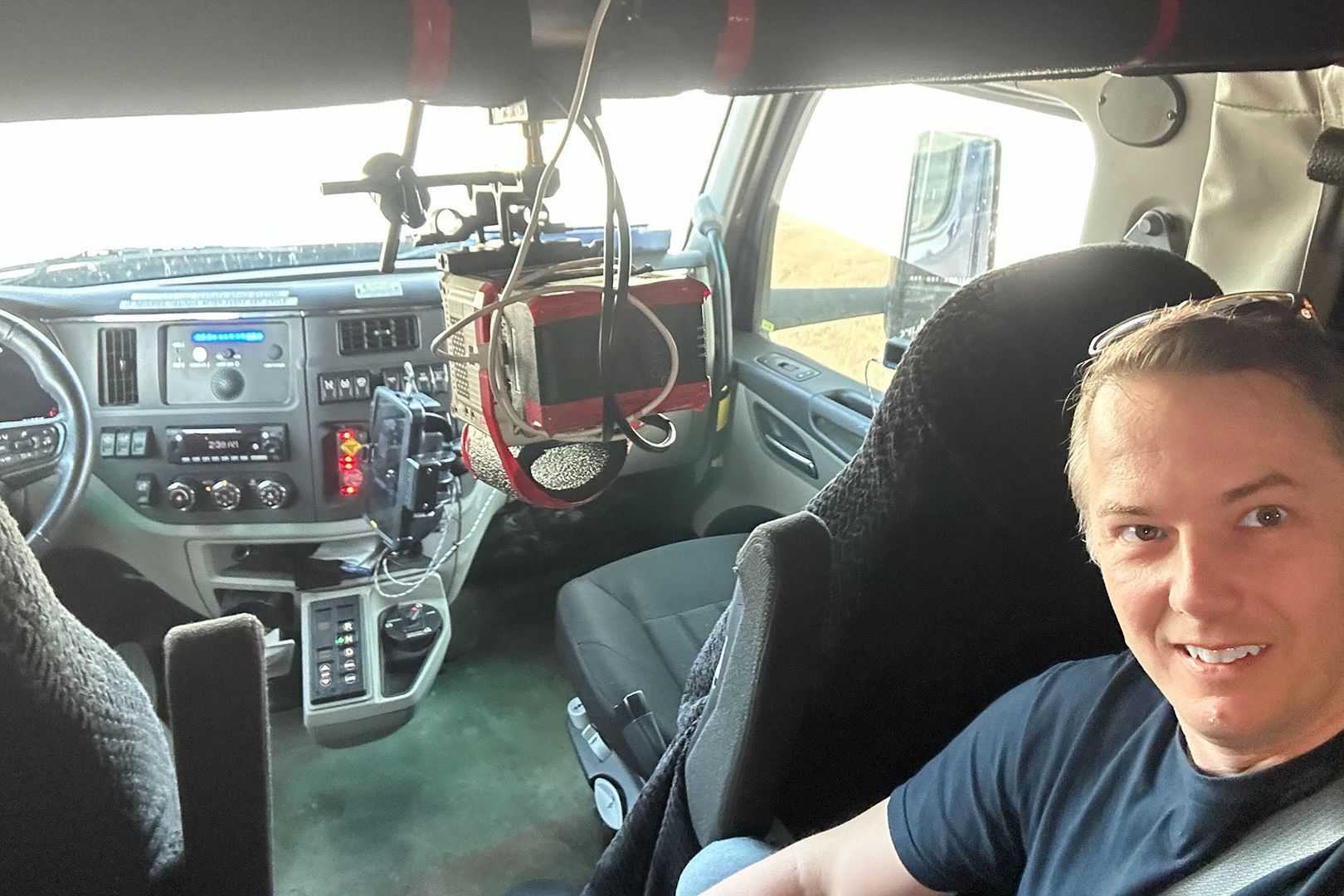
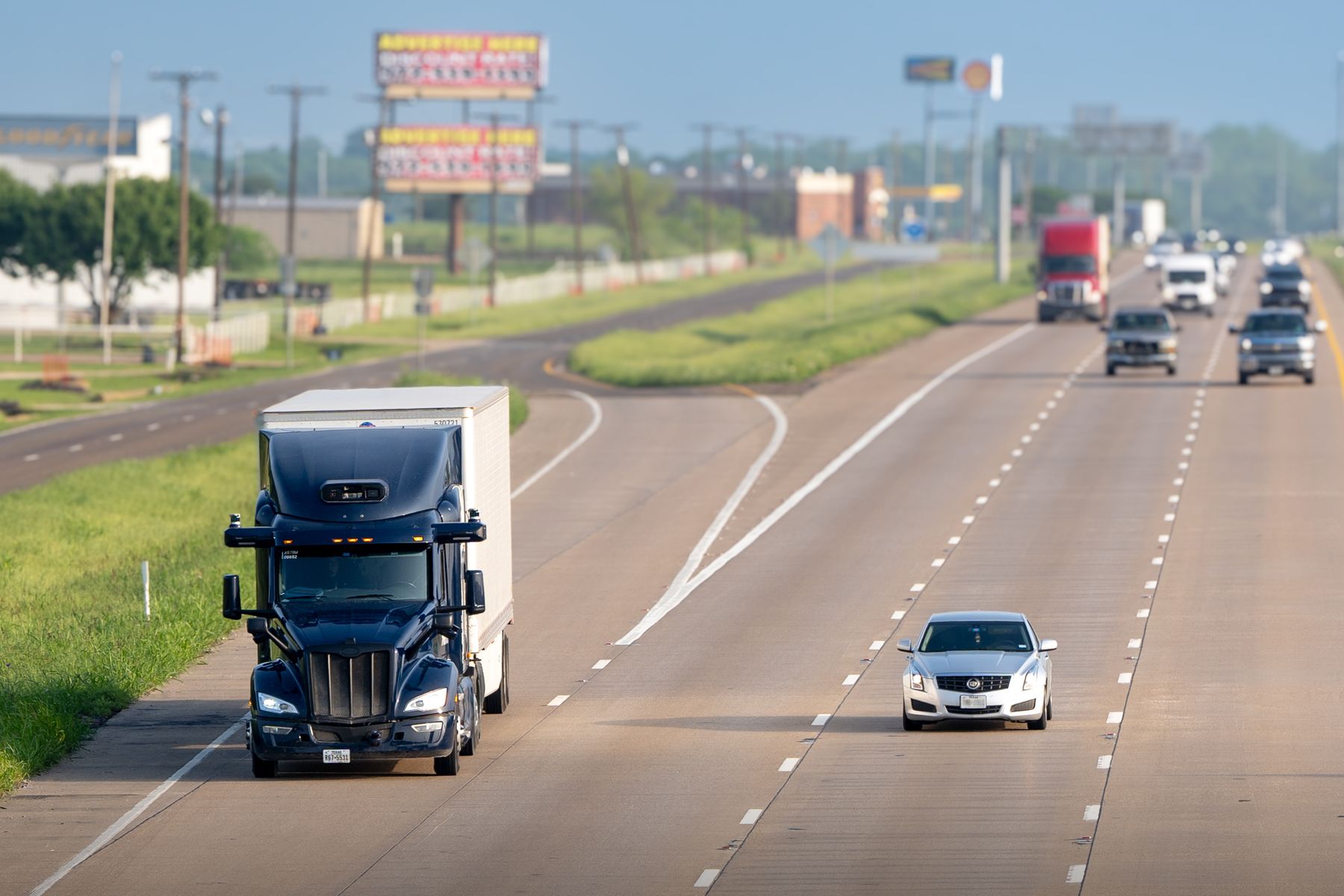
Urmson sees even bigger opportunities ahead. “The impact we’re going to have on road safety, quality of life for people, the U.S. economy, and our competitiveness over the next century—I think this is going to be transformational in so many ways,” he says.
For a kid who grew up building Lego robots and dreaming about space, it’s been a remarkable ride. “I feel privileged to have been part of this moment, working with amazing people and making a real difference in the world,” Urmson says. One day, he imagines, his grandkids will marvel that anyone ever had to drive a car themselves. “And I’ll be able to say, ‘Yeah, I helped make that change,’” he says with a smile. “That’s pretty awesome.”
Published — June 5, 2025
-
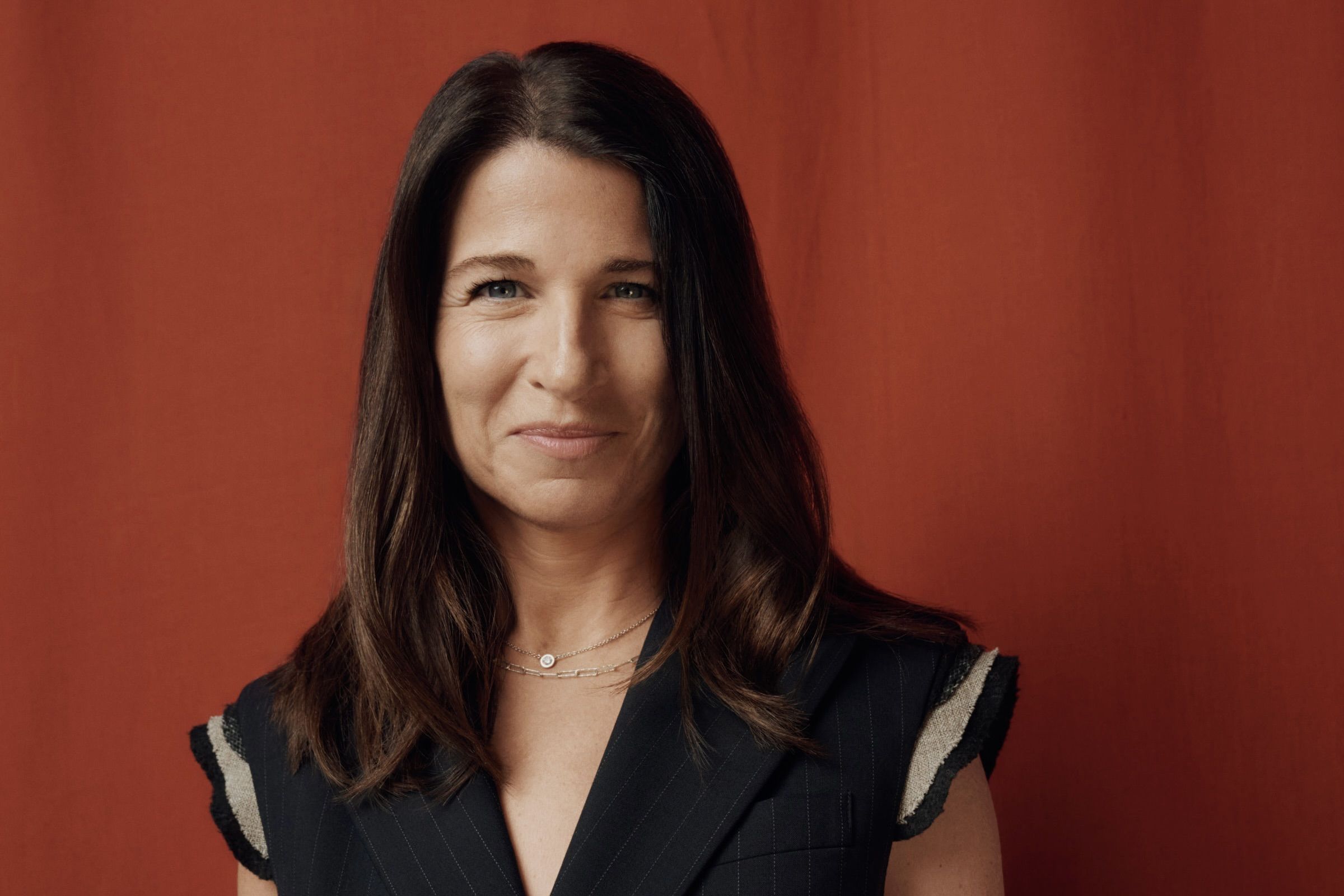
-
